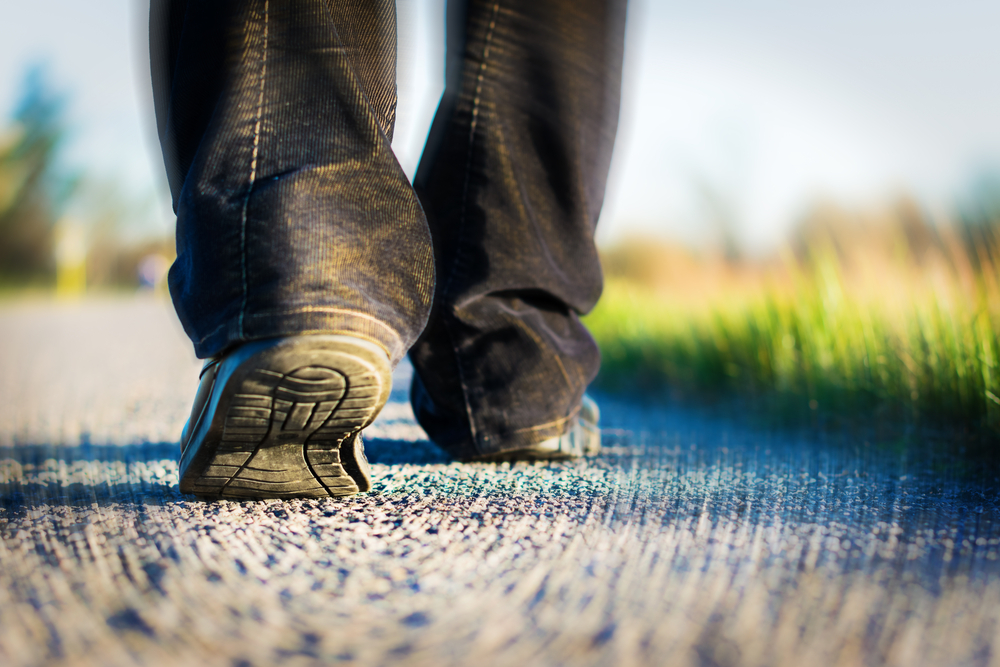“Walking is the natural recreation for a person who desires not absolutely to suppress his intellect but to turn it out to play for a season.” – Leslie Stephen
As humans, most of us engage in physical movement every day.
Some more than others, of course, and some by design while others move by necessity. Our work, our recreation, our interactions with others and the world around us all demand some level and degree of movement.
And walking is perhaps the most primal and essential form of movement we practice.
But there are hundreds of thousands here in the United States alone who suffer from various types and degrees of pain as a result of simply walking.
When Walking Means Pain
One of the reasons for unnecessary pain is a loss of an efficient gait, or manner of walking. And this condition can arise from a variety of causes.
As one source notes,
“In certain areas of our body up to 93% of the energy required to walk comes from stretch and recoil of our own muscular tissue. As tendons stretch and muscles eccentrically load, energy is stored and returned to the body via concentric contraction. Unfortunately in many of us this efficiency has been hampered over time by old injuries or repetitive movements.”
For many of us, life is marked by a series of vague pains in our feet, problems with our knees and lower leg regions, and often by lower back pain that seems to have no distinct cause.
While there can be several reasons for the causes of these various pain issues, what we have determined here at Pain and Performance Solutions is that the cause is often inefficient or dysfunctional gaits.
And closely related to this condition is compensatory or compensating pain.
A common example of the body compensating is hamstring or low back pain while walking or running. Injuries or issues with muscles and tendons including the gluteus maximus, hamstring, and the lower back extensors can compensate while in motion. The gait is then altered, often resulting in a hamstring strain, chronic hamstring tightness, or lower back pain.
The interplay and systemic interactions of our body’s joints and various soft tissues – muscles, tendons, and ligaments – all work together to determine our posture and our gait. And these can be “out of alignment” and become less than efficient.
And the result is often recurring or chronic pain.
Integrating Anatomy in Motion, or AiM, to Lead the Way to Recovery
As we have stated elsewhere here,
“Anatomy in Motion, or AiM for short – is a complete road map to the structure of the human body, with no stone unturned. AiM philosophy is founded on principles of movement that are influenced by our most primal, repetitive, and fundamental movement: walking (or gait).”
It is an often disregarded or overlooked fact that so much of what we subject our feet to can impact directly – and indirectly – a wide variety of body regions and movement functions.
From the types of shoes we choose to wear each day to the surfaces we have to walk on to the ways we’ve learned to walk including our stride, our gait, and our walking posture – all of these have a direct impact on our feet.
And this in turn, has an impact on our bodies and our well-being.
By applying the modality of AiM, we can help you discover and identify issues with your normal gait cycle. Anatomy in Motion, simply put, is a comprehensive gait analysis system and a targeted movement therapy to correct movement imbalances.
As one clinic’s website notes,
“AiM can help us with posture, walking or running pain, back and neck problems and foot and ankle issues.”
But the first step to taking “aim” at proper movement restoration and eliminating chronic pain is to seek help from those who can help.
Restore Your Proper Gait with Pain and Performance Solutions
When you first come to see us, we’ll work with you to learn everything we can about your back pain, along with any history of discomfort. This is because effectively treating your lower back pain can only start after we understand where and how your pain started.
Once your verbal assessment and history are completed, we conduct a full examination. Together, these steps allow us to determine the best form of treatment to help you along your road to recovery.
Many times, as we experience pain our bodies try to compensate by making subtle adjustments in movement to minimize or avoid the pain. However, what happens then is that, as our bodies actually shift that pain to compensate for our discomfort, it can result in different areas of pain.
Finding chronic pain relief with therapies like Anatomy in Motion, or Aim, along with applying Active Release Techniques® can only begin after we understand where your pain started. That could mean it started previously with another injury you might have sustained.
Your trust in us and your honesty are keys to our success
Ultimately, the only way to achieve total pain relief and recovery is by getting your body healthy and working properly. So, don’t hesitate to reach out. We are here to help and answer any questions that you may have.
You can reach us at (707) 636-4404 or by filling out our online contact form.
